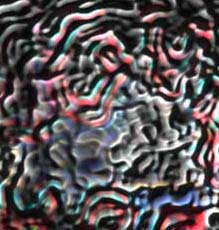| A major groundbreaking discovery has been made that reveals the mechanism for addiction of all substances lie in an ancient part of the brain. With this new discovery, Scientists now believe it is possible to provide specific treatments that will successfully treat addictions. By combining the results of both clinical and neuroscience research, this advance signals a new era in treating addictions.
The past ten years of study have revealed the architecture apparatus of substance abuse, revealing the neurological circuitry that drives addicts to continue with their dependency. No matter what the substance, all activate a single circuit for pleasure deep in the most ancient part of the brain. This circuit, for the neurotransmitter dopamine, is the site of the high that drugs and alcohol bring.
Neuroscientists have discovered an altered pathway in the ancient part of our brains, called the mesolimbic dopamine system. The illustration below shows a normal state of this system.
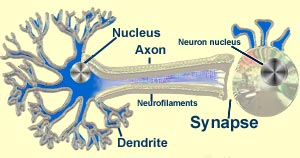
In the addictive state, the structure of neurons along the pathway are altered. Repeated substance abuse overload normal neurotransmitter systems. The illustration below shows the dopamine pathway as smaller. Less dopamine means more craving of the addictive substance. Dendrites are also killed off in the process.
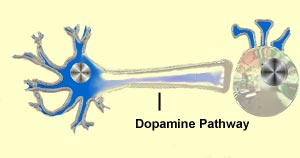
The process of addiction is no less than a chemical assault on the brain that alters the structure of its neuron circuitry. This assault specifically starves brain cells of dopamine, the chemical messenger that plays a key role in modulating behavior, thus triggering a craving for an addictive substance.
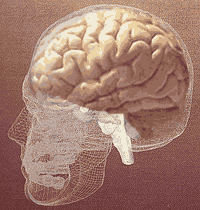
Dopamine Pathway
Other neurotransmitters can be involved in the addictive process as well. The drug "Ecstacy" for example, stimulates serotonin producing cells, which turn on the areas of the prefrontal cortex that give feelings of euphoria, meaning and affections. Coming down from Ecstacy causes the cells to produce a greater rush of neurotransmitter than antidepressants and its mechanism puts regualr users in danger of burning out the cells, creating temporary withdrawl symptoms and a long-term risk of chronic depression.
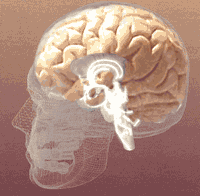
Serotonin Pathway
Neurochemical Cocktail Cure-Alls?
Researchers are presently working on developing medications to intervene with the brain's chemical processes that contribute to dependency on alcohol and drugs. For instance, a neurochemical cocktail could block the receptors in specific neurons to reduce the pleasure of drinking alcohol. Dr. Leshner, of the National Institute on Drug Abuse, said, "though I don't think we'll ever have a magic bullet, we might instead one day have neurochemical cocktails that are specific to each addictive drug that would break the cycle of craving."
For those who choose to end their addiction to substances, a simple cocktail could intervene to prevent the devestating affects these Brain Assault Chemicals cause described as follows:
Stress and its Effect on the Brain
Severe stress from emotional trauma has been discovered to damage the part of the brain that is crucial to memory, the hippocampus. The hippocampus is responsible for holding short-term memories and thus is necessary in the learning process.
A study, reported in The American Journal of Psychiatry in 1995, was lead by Dr. Douglas Bremner and Dr. Dennis Charney at the Veterans Affairs Medical Center in West Haven, showed a physical alteration, an 8% reduction in the volume of the right hippocampus compared with those who suffered no symptoms. In addition, the study showed survivors of childhood abuse performed at levels averaging 40% lower on a test of verbal memory than did people of comparable age and education.
Dr. Bremner said, "the memory of those with post-traumatic symptoms is particularly faulty for words, like grocery lists or phone numbers. The study found no deficiency in the trauma victim's overall IQ scores, however."
The shrinkage of the hippocampus may be due to the effects of heightened levels of cortisol, a steroid hormone secreted by the brain in response to emergencies. Dr. Bremner said "Cortisol can be toxic to the hippocampus." Yet, there were conflicting reports in which cortisol was also shown to be at low levels in concentration camp post-traumatic survivors. "There are mixed findings on cortisol levels in trauma victims. . . biologically speaking, there may be different kinds of post-traumatic stress."

Addiction Counseling World
November/December 1997 Issue
Brain Images of Addiction in Action Show Its Neural Basis
Daniel Goleman, 1995
The Science Times Book of the Brain, N.Y. Times
Mapping the Brain, Rita Carter, 1998
Weidenfeld & Nicolson
Severe Trauma May Damage the Brain as Well as the Psyche
Daniel Goleman, August, 1995
The Science Times Book of the Brain, N.Y. Times
|

